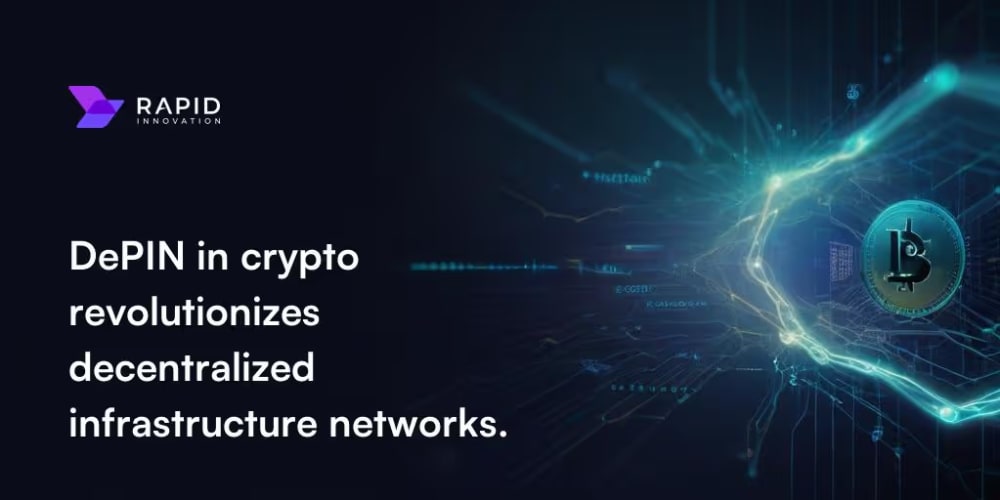<!DOCTYPE html>
Docker Cheat Sheet for Beginners
<br>
body {<br>
font-family: sans-serif;<br>
line-height: 1.6;<br>
margin: 0;<br>
padding: 0;<br>
}</p>
<div class="highlight"><pre class="highlight plaintext"><code> h1, h2, h3, h4, h5, h6 {
font-weight: bold;
}
code {
font-family: monospace;
background-color: #f0f0f0;
padding: 2px 4px;
border-radius: 3px;
}
pre {
background-color: #f0f0f0;
padding: 10px;
border-radius: 5px;
overflow-x: auto;
}
img {
max-width: 100%;
height: auto;
display: block;
margin: 10px auto;
}
.container {
max-width: 800px;
margin: 20px auto;
padding: 20px;
}
.section {
margin-bottom: 30px;
}
.list-item {
margin-bottom: 10px;
}
</code></pre></div>
<p>
Docker Cheat Sheet for Beginners
Introduction
Docker is a revolutionary technology that has transformed the way software is developed, deployed, and managed. It's an open-source platform that allows developers to package and run applications in isolated environments called containers. These containers bundle everything an application needs to run, including libraries, dependencies, and configuration files, ensuring consistency and portability across different environments.
Before Docker, developers often struggled with the complexities of setting up and managing applications on different machines. This led to issues like compatibility problems, environment inconsistencies, and lengthy deployment processes. Docker elegantly addresses these challenges, offering a standardized and lightweight approach to software deployment and management.
Why is Docker Relevant?
-
Portability:
Docker containers run seamlessly across various platforms, from development machines to production servers, ensuring consistent behavior regardless of the underlying infrastructure. -
Efficiency:
Docker's lightweight containers use fewer resources than traditional virtual machines, leading to improved performance and reduced overhead. -
Scalability:
Docker makes it easy to scale applications horizontally by simply creating more containers. This allows developers to handle increased traffic and demand effortlessly. -
Collaboration:
Docker facilitates collaboration among developers by providing a consistent environment for everyone to work on. Teams can share and reuse containers, eliminating potential conflicts and streamlining development workflows. -
Faster Deployment:
Docker simplifies the deployment process by providing a consistent and reproducible way to package and run applications. This speeds up development cycles and reduces the time it takes to deliver new features to users.
Key Concepts and Terminology
Understanding the basic concepts of Docker is essential for working with it effectively.
1. Containers
Containers are isolated environments that package applications and their dependencies together. They are lightweight, self-contained, and portable. Think of them as miniature virtual machines, but without the overhead of running a full operating system.
2. Images
Docker images are blueprints for creating containers. They contain all the necessary files and instructions to build a container. You can think of an image as a template or a snapshot of a running container.
3. Dockerfile
A Dockerfile is a text file that contains instructions for building a Docker image. It specifies the base image to use, the necessary files to include, and the commands to run during the build process.
4. Docker Hub
Docker Hub is a cloud-based registry where users can share and download Docker images. It's a central repository that provides access to a vast library of pre-built images for various applications and tools.
5. Docker Compose
Docker Compose is a tool for defining and managing multi-container Docker applications. It allows you to orchestrate multiple containers together and configure their interactions in a single YAML file.
6. Docker Daemon
The Docker daemon is a background process that manages Docker containers. It's responsible for building, running, and stopping containers, as well as managing images and networks.
Practical Use Cases and Benefits
Docker has found widespread adoption across diverse industries and applications.
1. Web Development
Docker simplifies web development by providing a consistent environment for developers to work on. They can easily set up their development environments, including web servers, databases, and other dependencies, without worrying about conflicts or compatibility issues. This allows for faster iteration and deployment of web applications.
2. Microservices
Docker is a perfect fit for building and deploying microservices. It allows developers to package and run each microservice as a separate container, making them independent and scalable. This promotes modularity, flexibility, and faster development cycles.
3. Data Science and Machine Learning
Data scientists and machine learning engineers benefit from Docker's ability to create reproducible environments for their models and tools. Docker containers ensure that all the necessary dependencies and libraries are available, regardless of the underlying platform, preventing potential conflicts or errors.
4. Continuous Integration and Continuous Delivery (CI/CD)
Docker integrates seamlessly with CI/CD pipelines, automating the process of building, testing, and deploying applications. Docker containers provide a consistent and reproducible environment for CI/CD systems, ensuring that code changes are tested and deployed reliably.
5. Cloud Computing
Docker plays a vital role in cloud computing, allowing developers to easily package and deploy applications in the cloud. Docker containers are highly portable and can be seamlessly deployed on various cloud platforms, such as AWS, Azure, and Google Cloud. This provides flexibility, scalability, and cost-efficiency.
Step-by-Step Guide: Building a Simple Docker Image
Let's build a simple Docker image for a Node.js application.
1. Install Docker
Download and install Docker Desktop from the official website:
https://www.docker.com/products/docker-desktop
2. Create a Node.js Application
Create a simple Node.js application with a "server.js" file:
const express = require('express');
const app = express();app.get('/', (req, res) => { res.send('Hello, world!'); }); const port = process.env.PORT || 3000; app.listen(port, () => { console.log(`Server listening on port ${port}`); }); </code> </pre> <h3> 3. Create a Dockerfile </h3> <p> Create a "Dockerfile" in the same directory as your Node.js application: </p> <pre> <code> # Use Node.js 18 as the base image FROM node:18 # Set the working directory WORKDIR /app # Copy the application files into the container COPY . . # Install dependencies RUN npm install # Expose port 3000 EXPOSE 3000 # Define the command to run when the container starts CMD ["npm", "start"] </code> </pre> <h3> 4. Build the Docker Image </h3> <p> Open a terminal in the directory containing your Dockerfile and run: </p> <pre> <code> docker build -t my-node-app . </code> </pre> <h3> 5. Run the Container </h3> <p> Run the built image as a container: </p> <pre> <code> docker run -p 3000:3000 my-node-app </code> </pre> <h3> 6. Access the Application </h3> <p> Open your browser and navigate to http://localhost:3000. You should see the message "Hello, world!". </p>
Challenges and Limitations
While Docker offers numerous benefits, it's important to be aware of potential challenges and limitations:
1. Security
Containers share the host operating system's kernel, which can potentially pose security risks if containers are not properly configured and isolated. It's crucial to employ best practices for container security, such as using secure images, limiting container privileges, and implementing network security measures.
2. Resource Management
Docker containers require careful resource management to avoid resource contention and ensure optimal performance. It's important to monitor container resource usage and adjust resource limits as needed. This involves setting CPU and memory limits for containers to prevent them from consuming excessive resources.
3. Complexity
Working with Docker involves learning a new set of tools and concepts, which can be a challenge for beginners. However, the numerous resources and tutorials available online make it easier to learn Docker and overcome the initial learning curve.
4. Limited Isolation
While containers provide a high level of isolation, they are not completely isolated from the host system. Certain issues, such as shared libraries or network configurations, can affect multiple containers. This requires careful attention to container configuration and resource management.
Comparison with Alternatives
Docker is not the only technology for containerization. Here's a comparison with some popular alternatives:
1. LXC (Linux Containers)
LXC is a lightweight virtualization technology that provides Linux containerization. It's more lightweight than Docker and offers greater flexibility, but it requires a deeper understanding of system administration.
2. rkt (Rocket)
rkt is a container runtime that focuses on security and immutability. It prioritizes security by using a strict security model and offers better container isolation than Docker.
3. Podman
Podman is a container engine that provides a Docker-compatible interface. It's designed to be a drop-in replacement for Docker, offering similar features with improved security and resource management capabilities.
Choosing the right containerization technology depends on your specific needs and priorities. For ease of use and a large ecosystem of support, Docker is an excellent choice. However, if you require advanced security features or flexibility, other options like rkt or Podman might be better suited.
Conclusion
Docker has emerged as a transformative technology for modern software development and deployment. Its lightweight containers, portability, scalability, and ease of use have revolutionized the way applications are built and managed. Docker has enabled developers to create more efficient, reliable, and portable applications, empowering them to innovate faster and deploy software with greater confidence.
Key Takeaways:
- Docker provides a consistent and reproducible way to package and run applications in isolated environments called containers.
- Docker simplifies deployment, promotes collaboration, and improves efficiency and scalability.
- Docker images are templates for creating containers, and Dockerfiles define the instructions for building images.
- Docker has widespread applications in web development, microservices, data science, CI/CD, and cloud computing.
- It's important to be aware of potential security challenges and limitations of Docker, and to employ best practices for container security and resource management.
Next Steps:
- Explore Docker Hub to discover and use pre-built images for various applications.
- Learn about Docker Compose for managing multi-container applications.
- Investigate Docker Swarm or Kubernetes for container orchestration and scaling.
- Deep dive into Docker security best practices to secure your containerized applications.
Docker is a powerful and versatile tool that can enhance your software development process and unleash the full potential of your applications. Embracing Docker can unlock new possibilities for agility, efficiency, and scalability in the modern technology landscape.
Call to Action
Start exploring Docker today! Dive into the vast world of containers and discover how it can transform your development workflow. Experiment with building your own Docker images, explore the wealth of resources available online, and join the thriving Docker community. The possibilities with Docker are endless!


















